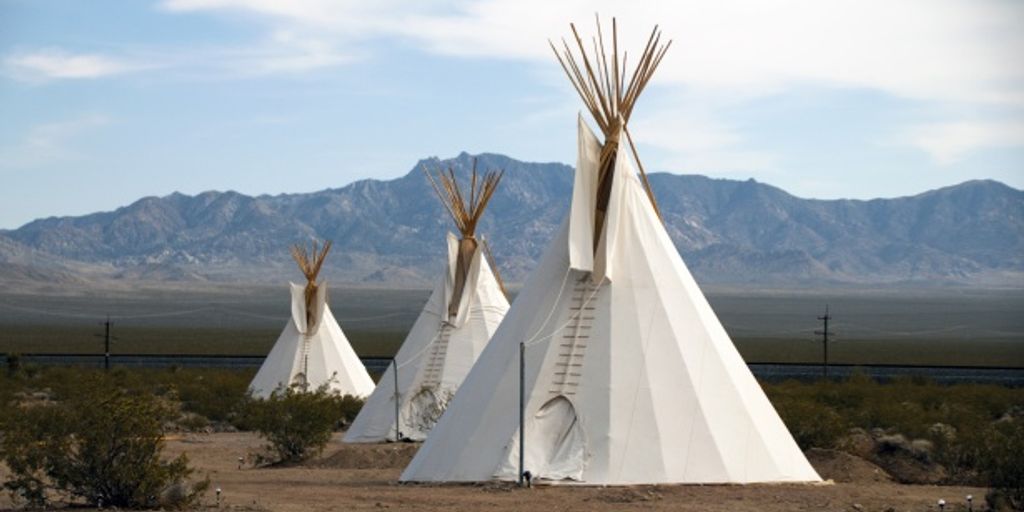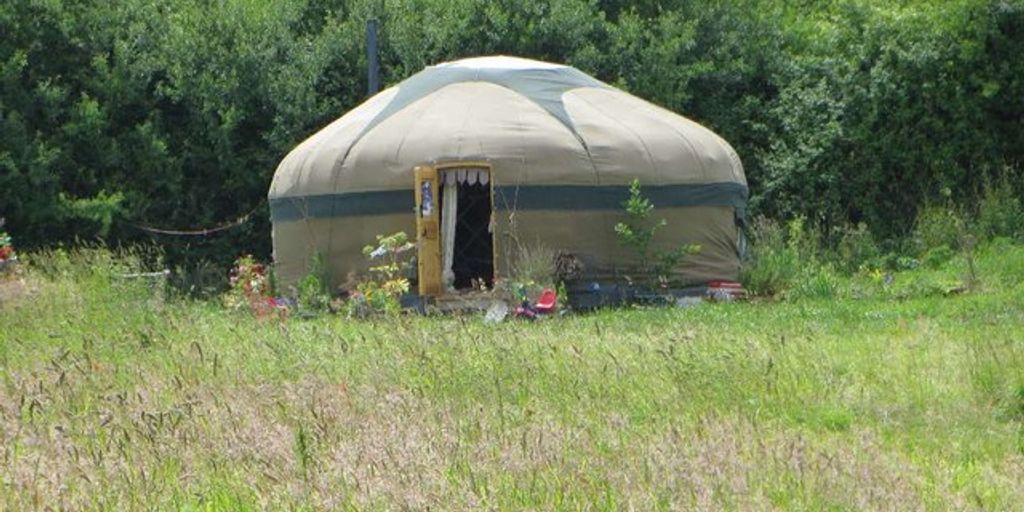Difference between yurt and tepee
Yurts and teepees are two distinct types of traditional dwellings that have been used by various cultures throughout history. Both structures are portable and have been adapted for modern use, but they differ significantly in their design, construction, and cultural significance. Understanding these differences can help you choose the right structure for your needs, whether you’re looking for a unique living space, a temporary shelter, or an event venue.
Key Takeaways
- Yurts are circular tents with walls and a roof, while teepees are conical structures without walls or a roof.
- Yurts are generally larger and more intricate in structure compared to the simpler and smaller teepees.
- In terms of cost, yurts are more expensive than teepees, both in initial setup and maintenance.
- Yurts are better at retaining heat, making them more suitable for colder climates, whereas teepees offer better ventilation.
- Both yurts and teepees hold cultural significance, with yurts being traditional dwellings in Central Asia and teepees being used by Native American tribes.
Understanding Yurts
Definition and Origin
Yurts, also known as gers, originate from Central Asia and have been around for over three thousand years. They were traditionally used by nomads, making them easy to set up and take down in just a few hours. The structure is made up of a wooden lattice-work for the walls, which supports the roof poles and crown. Originally, they were covered with animal skins.
Key Features
Yurts are incredibly versatile and can range from simple sheepskin constructions to large, furnished dwellings with a permanent foundation. They are sturdy, spacious, and comfortable even in cold weather. The design includes a wooden lattice structure that supports the roof, making them both durable and portable.
Modern Uses
In modern times, yurts are still in use and have found new purposes. Some people use them as retreats to get away from the hustle and bustle of daily life. They are also popular for glamping, offering a unique blend of comfort and adventure. Yurts can be surprisingly large and well-furnished, making them suitable for a variety of housing needs.
Yurts are a little more versatile than other traditional tent types, offering a unique blend of comfort and portability.
Exploring Teepees
Definition and Origin
A teepee, also known as a tipi, is a conical-shaped dwelling traditionally used by Native American tribes. Teepees feature a simple construction that consists of animal skins wrapped around a conical frame made of several thin shafts of wood. They were particularly popular among tribes on the plains due to the sparse resources available in these wide-open grasslands. Like yurts, teepees were designed for nomadic residents who needed to pack them up and easily take them as they wandered from place to place.
Key Features
One of the most recognisable aspects of the teepee is its flaps and an opening near the top, which allows for smoke ventilation. Typically, a teepee uses about 15-25 poles – two for smoke flaps and the others for the frame. These poles are tied together at the peak of the cone. During hot seasons, you can open up the smoke flaps to catch moving air, while in cold seasons, wood fires and additional liners help to heat the interior.
Modern Uses
Today, teepees are not just historical artefacts but are also used in various modern contexts. They make thoughtful gifts for travellers and adventurers, symbolising a passion for exploring the unknown. Additionally, they are often used in cultural events, educational programmes, and even as unique accommodation options in eco-tourism.
Teepees are famous as the home of all indigenous Americans, decorated with colourful paintings and symbols of their hunts during the winter season.
Structural Differences
When it comes to the walls and roof, yurts and teepees are quite distinct. A yurt tent is a round structure with a sloping roof, typically built from wood or bamboo fashioned into lattice webbing. This creates a sturdy and secure frame. On the other hand, a teepee is a conical-shaped dwelling that lacks traditional walls and a roof. Instead, it uses long poles arranged in a cone shape, covered with animal hides or canvas.
Yurts generally offer more space and headroom compared to teepees. The circular design of a yurt allows for a more spacious interior, making it ideal for families or groups. Teepees, while easier to set up and transport, tend to be smaller and offer less headroom, which can be a consideration if you plan to spend a lot of time inside.
In terms of complexity, yurts are more intricate structures. They require a bit more effort to set up due to their wooden framework and lattice design. Teepees, however, are simpler and quicker to assemble, making them a popular choice for those who need a portable and easy-to-construct shelter.
If you’re looking for a structure that’s easy to set up and transport, a teepee might be the way to go. But if you need more space and a sturdier build, a yurt could be your best bet.
Cost Comparison
Initial Costs
When it comes to initial costs, yurts tend to be more expensive than teepees. For instance, a standard 24’ yurt package costs around $8,295, whereas a basic teepee of the same size will set you back approximately $2,483. The price difference becomes even more pronounced as the size decreases. A 16’ teepee runs about $1,072, while the same size yurt is $5,915.
Maintenance Costs
Maintenance costs can also vary significantly between yurts and teepees. Yurts, with their more complex structures and materials, often require more upkeep. This can include repairs to the wooden frame, replacing the outer covering, and ensuring the insulation remains effective. Teepees, on the other hand, are generally easier and cheaper to maintain, primarily needing occasional canvas repairs.
Value for Money
In terms of value for money, it really depends on what you’re looking for. Yurts offer a more permanent and insulated living space, which can be worth the higher initial and maintenance costs if you plan to use it year-round. Teepees, being less expensive and easier to maintain, might be a better option for seasonal use or for those on a tighter budget.
A major factor in the cost is the yurt’s size. Cost increases are the result of larger yurts requiring more work and materials.
Climate Adaptability

Heat Retention
Yurts and teepees both have unique ways of retaining heat. Yurts, with their thick felt insulation, are excellent at keeping the warmth in during cold months. Teepees, on the other hand, rely on their conical shape to trap heat efficiently. Both structures are designed to be cosy in winter.
Ventilation
When it comes to ventilation, teepees have a natural advantage. Their design includes a smoke hole at the top, which allows for excellent airflow. Yurts also have ventilation options, such as roof vents and windows, but they might not be as effective as the teepee’s smoke hole.
Weather Resistance
Yurts are known for their durability and can withstand harsh weather conditions, including heavy snow and strong winds. Teepees are also quite resilient but may require more maintenance to ensure they remain weatherproof.
Whether you choose a yurt or a teepee, both offer unique advantages in different climates.
Cultural Significance
Historical Context
Yurts and teepees both have rich histories that reflect the cultures they originate from. Yurts, with their roots in Central Asia, were essential for the nomadic tribes of the steppes. They provided a portable yet sturdy home that could withstand harsh climates. On the other hand, teepees are firmly a North American phenomenon. They have always been part of the cultural heritage of many Native American tribes, serving not just as homes but also as spiritual symbols.
Cultural Symbolism
The yurt and the teepee are more than just shelters; they are symbols of their respective cultures. For the nomadic tribes of Central Asia, the yurt symbolises adaptability and resilience. It represents a way of life that is in harmony with nature. Similarly, the teepee holds a special place in Native American culture. It is not just a dwelling but a spiritual symbol, often used in ceremonies and rituals. The cultural significance of the teepee is profound, reflecting the deep connection between the people and their land.
Modern-Day Relevance
In today’s world, both yurts and teepees have found new roles. Yurts are now popular as eco-friendly homes, glamping sites, and even yoga studios. They offer a unique blend of tradition and modernity. Teepees, too, have been recognised for their functional and aesthetic qualities. They are used as full-time residences, backyard play-caves, and weekend wilderness getaways. The modern-day relevance of these structures shows how timeless and adaptable they are.
The cultural significance of both yurts and teepees goes beyond their physical structures. They are living testaments to the ingenuity and spirit of the people who created them.
The cultural significance of yurts and teepees is deeply rooted in their historical and traditional uses by various communities. These structures not only provide shelter but also represent a way of life that is closely connected to nature and heritage. To learn more about the fascinating history and modern adaptations of these unique dwellings, visit our website and explore our detailed articles and booking options.
Conclusion
In summary, while both yurts and teepees offer unique and practical solutions for portable living spaces, they cater to different needs and preferences. Yurts, with their circular design, walls, and roof, provide a more intricate and spacious option, ideal for those seeking comfort and better heat retention. On the other hand, teepees, with their conical shape and simpler structure, offer a more traditional and cost-effective alternative, perfect for those who appreciate a connection to Native American heritage and a closer experience with nature. Whether you choose a yurt or a teepee, both structures have stood the test of time and continue to be cherished for their versatility and cultural significance.
Frequently Asked Questions
What is the primary difference between a yurt and a teepee?
The primary difference is that a yurt has walls and a roof, while a teepee does not have walls or a roof.
Are yurts more expensive than teepees?
Yes, yurts are generally more costly than teepees due to their intricate structure and larger size.
Which structure provides better heat retention, a yurt or a teepee?
Yurts provide better heat retention compared to teepees.
Do yurts offer more headroom than teepees?
Yes, yurts generally offer more headroom than teepees.
Can both yurts and teepees be used as full-time residences?
Yes, both yurts and teepees can serve as full-time residences, backyard play caves, and wilderness getaways.
Are teepees and yurts both transportable?
Yes, both structures are transportable and flexible during various climatic conditions.





